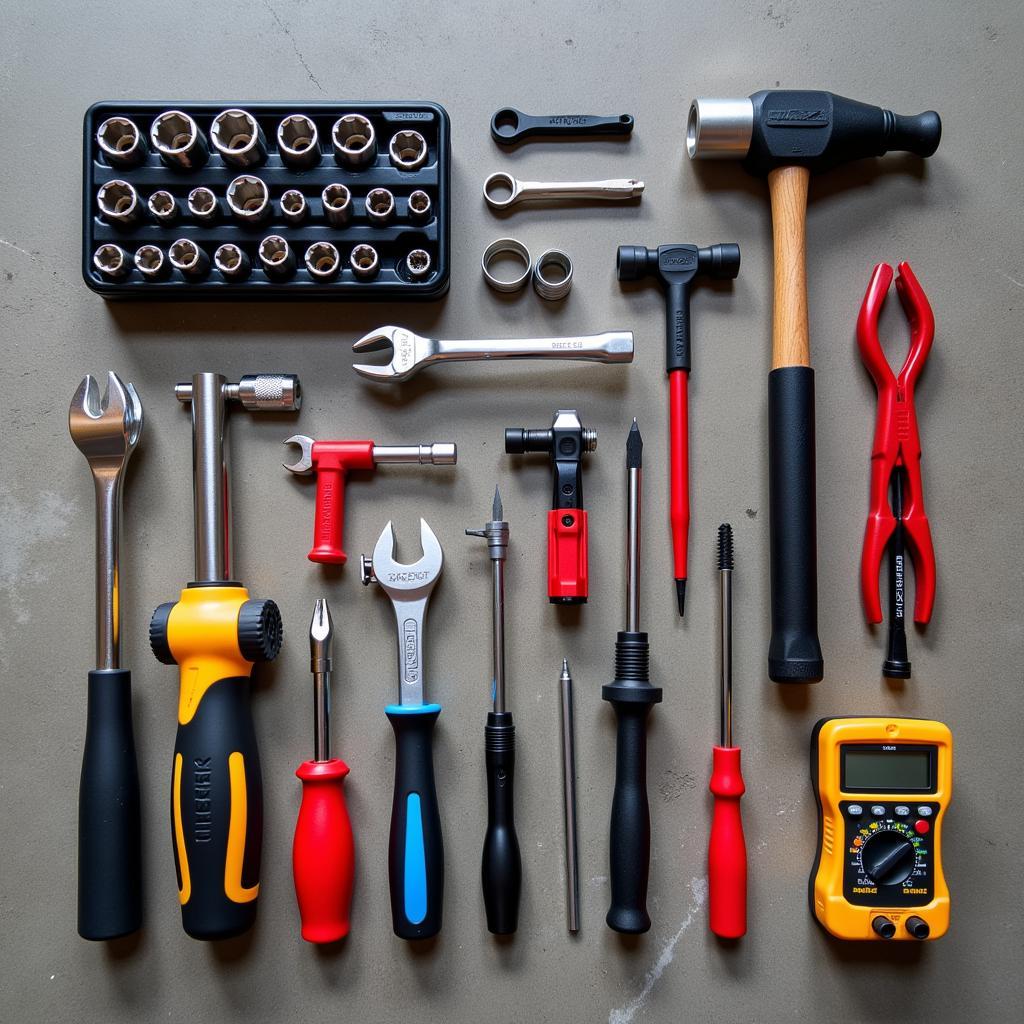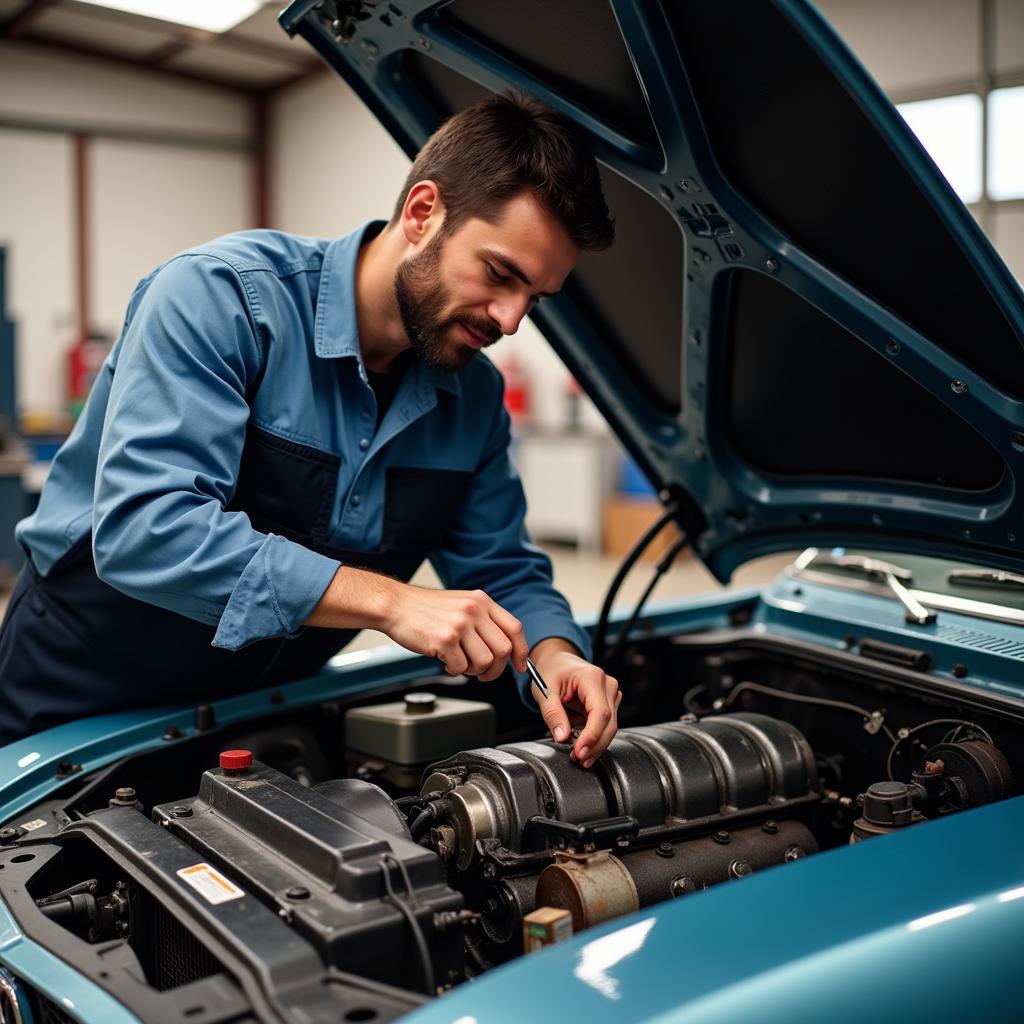Have you ever been stuck on the side of the road with a broken car? We’ve all been there, and it can be a real nightmare. But don’t worry, you don’t need to be a mechanic to fix your car. With a little bit of knowledge and the right tools, you can troubleshoot and repair most common car problems yourself. This guide will provide you with the essential information you need to get back on the road quickly and safely.
Understanding Car Problems: What to Look For
The first step to fixing your car is understanding what’s wrong with it. Here are some common car problems and their causes:
Engine Problems:
- Engine won’t start: This could be due to a dead battery, faulty starter, or problems with the fuel system.
- Engine misfires: A misfiring engine can be caused by a faulty spark plug, ignition coil, or fuel injector.
- Engine overheating: A common cause is a low coolant level, a malfunctioning thermostat, or a clogged radiator.
Transmission Problems:
- Transmission slipping: This can indicate a worn-out clutch, low transmission fluid, or a failing transmission.
- Transmission not shifting: This could be due to a faulty transmission control module, a broken linkage, or a clogged transmission filter.
Electrical Problems:
- Dead Battery: A dead battery can be caused by leaving the headlights on, a faulty alternator, or a parasitic draw.
- Lights not working: This could be due to a blown fuse, a faulty bulb, or a wiring problem.
- Electrical components failing: This can be caused by a short circuit, corrosion, or loose connections.
Suspension Problems:
- Steering wheel shaking: This can be caused by worn-out tires, unbalanced wheels, or a failing suspension component.
- Car pulling to one side: This could be due to a problem with the alignment, a faulty tire, or a failing suspension component.
Braking Problems:
- Brakes squealing: This is usually due to worn brake pads or rotors.
- Brakes feeling soft: This can indicate a problem with the brake fluid, a leak, or a faulty master cylinder.
- Brakes locking up: This could be caused by a faulty caliper, a stuck piston, or a problem with the brake lines.
Essential Tools for Car Repair
To tackle car problems yourself, you’ll need the right tools. Here are some essential items to have in your garage:
- Socket set: This includes a variety of sockets that fit different sized bolts and nuts.
- Wrench set: This set includes different sizes of wrenches that you’ll use for tightening and loosening bolts and nuts.
- Screwdriver set: You’ll need a variety of screwdrivers, including Phillips head and flat head screwdrivers.
- Pliers: Pliers are useful for gripping and holding small parts.
- Hammer: A hammer is essential for driving nails and other tasks.
- Jack and jack stands: These are necessary for lifting your car to access the underside.
- Torque wrench: A torque wrench is used to tighten bolts and nuts to the proper specifications.
- Multimeter: A multimeter is used for testing electrical circuits.
 Essential car repair tools laid out on a garage floor.
Essential car repair tools laid out on a garage floor.
Common Car Repair Tips
Here are some tips for fixing common car problems:
Replacing a Flat Tire
- Loosen the lug nuts slightly.
- Jack up the car using a jack and jack stands.
- Remove the lug nuts completely.
- Remove the flat tire.
- Mount the spare tire.
- Tighten the lug nuts by hand.
- Lower the car.
- Tighten the lug nuts fully with a torque wrench.
Checking and Replacing Fluids
- Engine oil: Check the oil level using the dipstick. Replace the oil every 3,000-5,000 miles.
- Coolant: Check the coolant level using the overflow tank. Replace the coolant every 2-3 years.
- Transmission fluid: Check the transmission fluid level using the dipstick. Replace the transmission fluid every 50,000-100,000 miles.
- Brake fluid: Check the brake fluid level in the reservoir. Replace the brake fluid every 2-3 years.
Replacing a Spark Plug
- Disconnect the battery.
- Locate the spark plug.
- Remove the spark plug wire.
- Remove the spark plug using a spark plug socket.
- Install the new spark plug.
- Reconnect the spark plug wire.
- Reconnect the battery.
 Mechanic replacing a car spark plug.
Mechanic replacing a car spark plug.
Expert Tips
Here are some expert tips from John Smith, a certified automotive technician with over 20 years of experience:
“Always consult your owner’s manual for specific instructions on how to repair your car. Never attempt to fix something you’re not comfortable with, and always prioritize safety when working on your vehicle.”
“Keep a basic toolkit in your car for emergency repairs. This could save you from being stranded on the side of the road.”
“Regular maintenance can help prevent major repairs down the road. Make sure to change your oil, fluids, and filters regularly.”
Conclusion
Fixing your car doesn’t have to be a daunting task. By understanding the basics of car repair and using the right tools, you can tackle most common car problems yourself. However, if you’re unsure about a repair, it’s always best to consult a professional mechanic. Remember, safety should always be your top priority when working on your vehicle.
Contact us for any assistance with your car repair needs:
Phone: +1 (641) 206-8880
Office: 500 N St Mary’s St, San Antonio, TX 78205, United States
FAQ
- What are some common signs that my car needs a repair?
Some common signs include strange noises, leaks, warning lights, and difficulty starting.
- How often should I take my car for a checkup?
It’s generally recommended to take your car for a checkup every 6 months or 5,000 miles, whichever comes first.
- What are some tips for maintaining my car?
Regular oil changes, fluid checks, and tire rotations are essential for keeping your car running smoothly.
- How do I know if I need to replace a part?
If a part is damaged, worn out, or malfunctioning, it’s likely time to replace it.
- Where can I find parts for my car?
You can find parts at auto parts stores, online retailers, and junkyards.







Leave a Reply